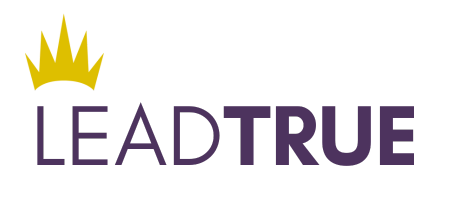Being Resilient: Do We Really Need to Be a Hero?
Resilience, as seen in the workplace, might feel elusive for many. It’s become a super heroic ingredient leaders use to move through challenges, turn them into opportunities, and call on others to manage their own change effectively.
Similarly, in our personal lives, resilience has become the providence of “supersurvivors.” These are individuals who overcome a traumatic experience, develop a positive future focus with new priorities, and thereby inspire others to effectively navigate challenging changes.
But do we have to become wonder woman or superman to be resilient? What if there was another way to view resilience so that us mere mortals could respond to any forms of change in our personal and professional lives?
The Lead True Model for True Leadership provides another way.
Lead True’s model is powered by inspiration which resides at its center. This is our power source and a secured point of return in the face of self-doubt or adversity. When faced with challenges alongside big or small changes, we often become disconnected from that inspired place in us. Resilience is the muscle that helps us reconnect to that center and live our lives more fully and proactively.
Lead True shows us that while we don’t have to be a super hero to be resilient, we might need to be heroic. The five-phase Hero’s Journey is one way to build our muscle of resilience. In a variation of Joseph Campbell’s Hero’s Journey, we have named the five phases to be The Puppet, The Victim, The Warrior, The Director, and The Leader.
Consider Cassie, a previous client who is a department manager at a Research Institute. She was told by her superiors that due to budget cuts, she’d have to let go of ten people within the next fiscal year. Using the five phases of her Hero’s Journey, we can follow Cassie’s inner logic as she copes with the situation and eventually leads her team and organization through this difficult change.
1. “Huh? What happened?” says the Puppet. Cassie is starting to wake up and slowly become aware of the reality of the situation. She hasn’t yet tapped into how she feels about the situation, but realizes there is something at stake for herself and others.
2. “This seems so unfair!” says the Victim. “This decision is also very unwise. Don’t others think so too?” This is a defensive and reactive phase for Cassie. She swirls in the problem and looks for confirmation of her thoughts and feelings from others. She needs to defend her point of view.
3. “I can make them see differently!” says the Warrior. While still reactive, Cassie is starting to move into action. She wants to build her case against this departmental decree and convince the management team to change their vision and decision. She is in what Steven Covey calls her Circle of Concern—worrying and expending energy about things she cannot control.
4. “Okay, let’s assess the situation for facts” says the Director. Cassie now moves into a responsive rather than reactive mode. She examines who are all the people involved and what are their positions. She begins to move from her Circle of Concern to Covey’s Circle of Influence—proactively choosing to direct her energy on issues she can control to work with others towards a solution.
5. “Interesting, let’s consider the bigger picture” says the Leader. Cassie realizes there is a larger learning opportunity from this change. She is connected to her source of inspiration and sees how to create a win-win situation for not just her department but for the organization as a whole. In sharing her vision, she inspires others to participate and contribute.
As we face a challenge, we move through these phases many times a day or over several months or even a year. Sometimes we move quickly, sometimes we get stuck in a phase. When this happens, it becomes important to honor the process and deepen our awareness. Understanding these phases and acceptance of this process provides access to the proactive Director and Leader and an ability to choose from which position to respond to the situation. We gain more clarity and access to choice for resilience and reconnection to our source of inspiration.
To respond to any forms of unwanted change, you don’t have to be wonder woman or superman. While change is daunting for many of us, change can also be the nexus where we are called upon to use our grit. It’s not the change itself, but how we deal with that change that can make all the difference in our journey of accomplishments and influence.
Being resilient—do we need to be a hero? Maybe yes, because it does take courage in unwanted situations to move from a reactive mode to responsive and proactive mode. However the courage is not about combat, but courage in pausing for awareness and choice.
About the Author
Lead True Global Leader Franciska Dekker is a systems thinker, both a pragmatic person and a visionary idealist. She is an expert in conscious leadership development: leading on a day-to-day from Presence. During 1985-2002 she has held a variety of positions with FAO in Africa and in the Caribbean, and with Wageningen University and Research Centre in the Netherlands. There after, starting in 2000, she changed her career to coaching and leadership development.





Resilience, as seen in the workplace, might feel elusive for many. It’s become a super heroic ingredient leaders use to move through challenges, turn them into opportunities, and call on others to manage their own change effectively.